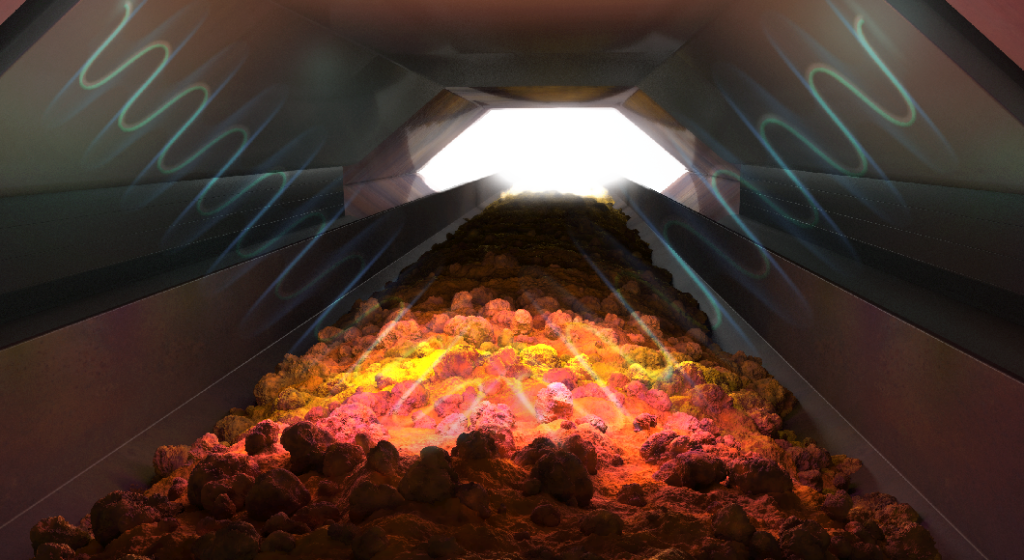Magnetite Mines Ltd says a study looking at applying NextOre’s on-belt magnetic resonance ore sorting solution at its Razorback Iron project, in South Australia, has shown the potential for a significant increase in plant throughput at the asset.
The ASX-listed company said results to date indicated that Razorback ores are especially well suited to bulk ore sorting with substantial improvements to ore mass recovery demonstrated in the study, completed by NextOre (a partnership between CSIRO and industry players Advisian and RFC Ambrian).
NextOre’s solution uses an on-conveyor magnetic resonance sensor to continually sense the grade of the material on the belt. This information is used to control a diverter gate that separates material above the selected cutoff grade (accepted material) from material below that grade (rejected material).
Magnetite Mines and NextOre, in October, signed an agreement that allows the development company exclusivity over any magnetite processing applications, Australia-wide, and all iron ore applications in the Braemar (including New South Wales) for a period of four years.
NextOre’s Razorback report demonstrates that the heterogeneity of the Razorback and Iron Peak resources allows for the potential for significant upgrading from ore sorting, Magnetite Mines said.
“For example, at a 50% rejection level (corresponding to a cutoff grade of approximately 16% Fe at Iron Peak and 14% Fe at Razorback), the grade of the accepted material would be increased by a factor of about 1.4,” the company said.
Were this to be implemented as part of a development of the project, by increasing mining rates, and pre-concentrating the plant feed, the throughput of a given plant capacity could be increased by some 40%, the company said. This would create significant savings in capital and operating costs per tonne of concentrate product, it added.
In order to assess the potential for bulk ore sorting at Razorback, NextOre used data drawn from the overall geological model for the Razorback and Iron Peak resources (the two resources that make up the Razorback project). The Razorback project currently has an inferred and indicated resource of 2,732 Mt at a grade of 18.2% Fe, but Magnetite Mines intends to produce a 68.8% Fe concentrate from the project.
NextOre then applied a fractal model, applying a mixing model to assess the predicted grade variation or heterogeneity of ‘pods’ of ore as they would present to an on-conveyor bulk ore sorting implementation, Magnetite Mines explained. Various sorting cutoff grades were selected to demonstrate a range of grade improvement scenarios, the company noted.
Magnetite Mines said: “Following the recently completed scoping study for a low capital cost, staged development of the Razorback project resources, this study highlights the applicability of NextOre’s magnetic resonance bulk ore sorting technology to the processing of the Razorback ores.
“When applied to a large, heterogeneous, low strip ratio deposit, such as Razorback, bulk ore sorting represents a pre-concentration technology ahead of the concentrator that can enhance throughput, improve economic efficiency and reduce tailings and water use.”
Magnetite Mines Chairman, Peter Schubert, said: “While our scoping study results for a low capital, staged development have been highly encouraging, we are now confident that the use of leading edge ore sorting technology can further enhance results, providing the company with a sustainable competitive advantage.”











